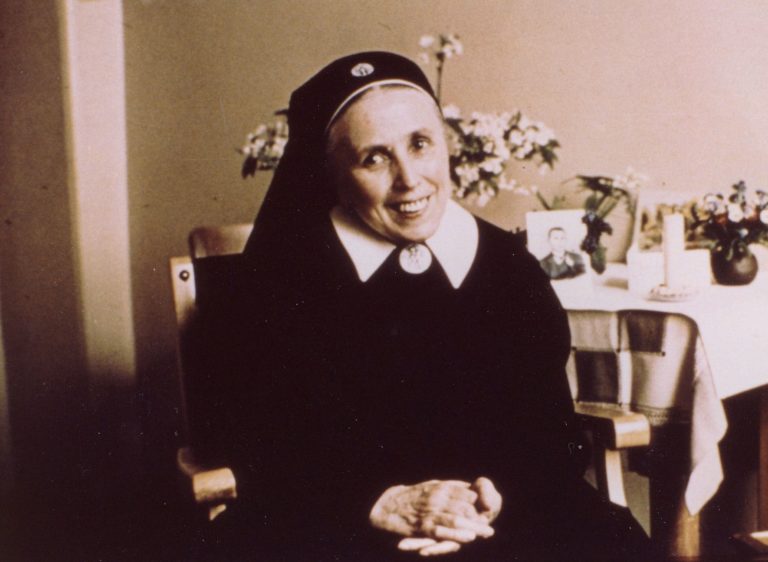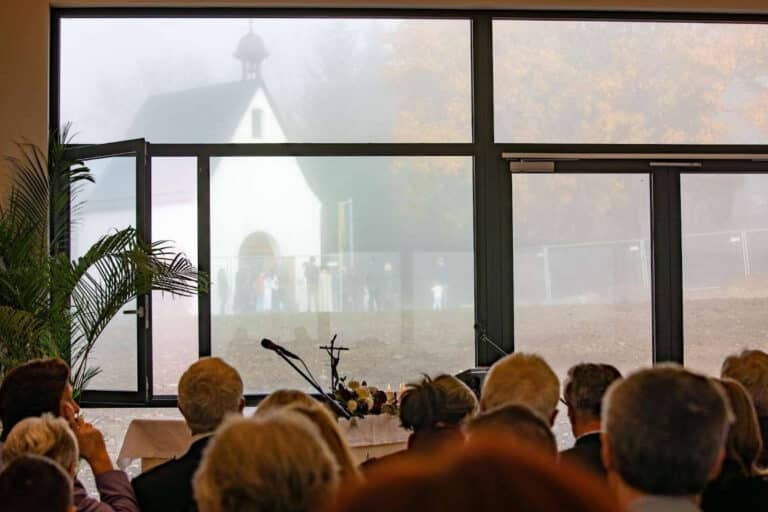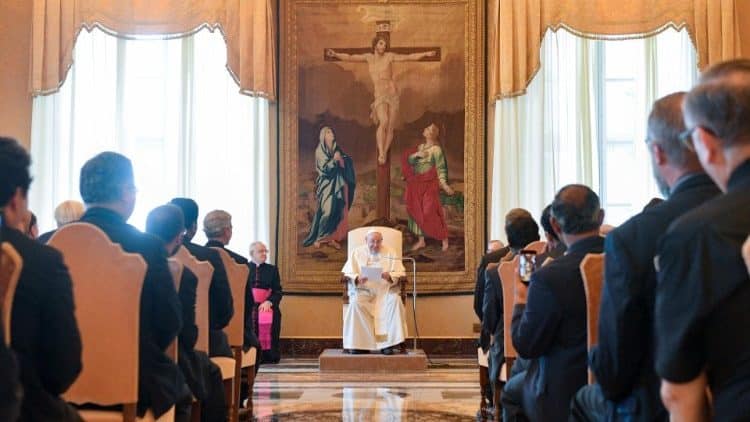Interview with Father Theo Breitinger
– Father Breitinger, how important was Schoenstatt for Father Franz Reinisch?
Father Breitinger: To answer this question, I think it is best to give the floor to Father Franz Reinisch. I once browsed through his diary and saw some of his statements and there I found how he himself commented on this matter.
But perhaps first of all, as a background, Father Reinisch got to know Schoenstatt in 1933, I believe, when he arrived in Friedberg.
There in the Provincial Council he came into contact with Schoenstatt magazines, especially with the magazine SalTerrae, published at that time by the Schoenstatt Diocesan Priests.
Here he found everything that was important to him: his relationship with Mary and what was important to him about his community, about the Pallottine Society, that is, the world of Vincent Pallotti’s ideas.
He devoured these writings and his longing to come to Schoenstatt grew and a year later it became possible.
He was in Schoenstatt for the first time in August 1934 and there he came in contact with the valley chapel, with the shrine, and from then on, he became enthralled with Schoenstatt. As a matter of fact, it could be said that he was already a Schoenstatter at heart.
In the words of Father Franz Reinisch
There he found realization, or fundamentally realized, what Vincente Pallotti had in mind.
And now an excerpt from what Franz Reinisch himself said about his relationship with Schoenstatt or what Schoenstatt meant to him:
“What had Schoenstatt’s place of grace become for me…” he wrote in his diary and provided the answer: “Home, where I felt at home. First of all, a natural peacefulness: because of the beautiful place and the hospitable living conditions. Then also a sense of peace, a spiritual well-being: because of the extraordinarily profound personality of Father Kentenich, because of the elevated ambiance and spiritual atmosphere, because of the love that surrounded me there: Spiritual peace above all also through the family of the priests, the sisters, the whole community, from the small chapel: here I can mention with deep gratitude the grace…”, he wrote, “…that I never doubted Schoenstatt for a single moment, but on the contrary, through the difficulties I only became more rooted in it. This gives me the greatest inner peace, freedom, confidence and firmness, especially in this last phase of my life”.
It should be added that these notes in his diary were written a few weeks before his death in July 1942. Father Kentenich played a very important role for him. He once said, I guess it was in a conversation with the prison clergyman at that time, Father Kreuzberg; he said at that time: Father Kentenich probably would have been the only one who could have made him change his mind about his last decision. So, Father Kentenich would have been the one who could have challenged this last decision,but Kentenich gave him strength.
What did Father Kentenich tell him?
There are two letters from Father Kentenich to Reinisch, where he writes to him in the prison cell in Berlin, which I have also read. It was July 14, 1942, a few weeks before his death and Father Kentenich tells him, “I have your letter in front of me all the time. There seems to be a certain tragedy in your life, but the time will come when the sun will shine on it. You are correct when you write that you completely surrender yourself to the dear will of the Father who is in heaven, and if you remain faithful to the dear Virgin Mary, you will then succeed in making the final decision, either now or in the face of death.
If you could let go completely and give yourself to Mary, then the Tyrolean hot blood would certainly quiet down a little so that you could free yourself for a concrete task. In what can this concrete task consist of? Here I must ask you another question: Where is your heart going and what possibilities are there for you in the present circumstances? You must offer your life at the highest price, and then your life’s path will not have crossed Schoenstatt in vain.”
What does Reinisch represent for today’s youth and for Schoenstatt?
This is what Father Kentenich wrote to Reinisch encouraging him to uphold his decision and to faithfully follow his path, his convictions.
What I observe in the Schoenstatt Movement, especially in the younger generation, is that they look up to Reinisch with great interest. The young people are drawn to him, above all they are inspired by his coherence, his faithfulness, his determination and the integrity with which he follows his path.
And what is important for us, for the Schoenstatt Movement, when we look at Reinisch: Reinisch was a complete Schoenstatter, on the one hand, and a complete Pallottine, on the other hand; and he is, one could say, like a living bridge, a sign of the bond between our communities: Schoenstatters and Pallottines. From this point of view, he can also today help make the union between the Pallottine communities and the Schoenstatt communities fruitful for the Church.



